

When did you first conceive of the idea that has become Terroir Históric?
There are three motivations for the foundation of Terroir Históric. One, to be honest, is an aesthetic one. There is a stunning and historic label from the Cooperativa de Tarragona called Union where you can see the facade of the Priory of Scala Dei and the Montsant mountains – a very powerful image, and at the bottom you can see that it is a blend from all the historic Cooperativas of the Priorat with the names of the nine villages. I was very intrigued by that beautiful historic label.
Secondly, there are two wines that are an inspiration for Terroir Históric: one is the historic winery of Scala Dei, Cartoixa d’Scala Dei, which bottled wine before the arrival of Rene Barbier and the other pioneers of the modern Priorat, the other was Masia Barril, now called Mas d’En Gil. These two wineries were bottling in Burgundy bottles and making wines in an uncomplicated and interesting way. They’ve aged very well especially the Scala Dei 1975 and 1976.
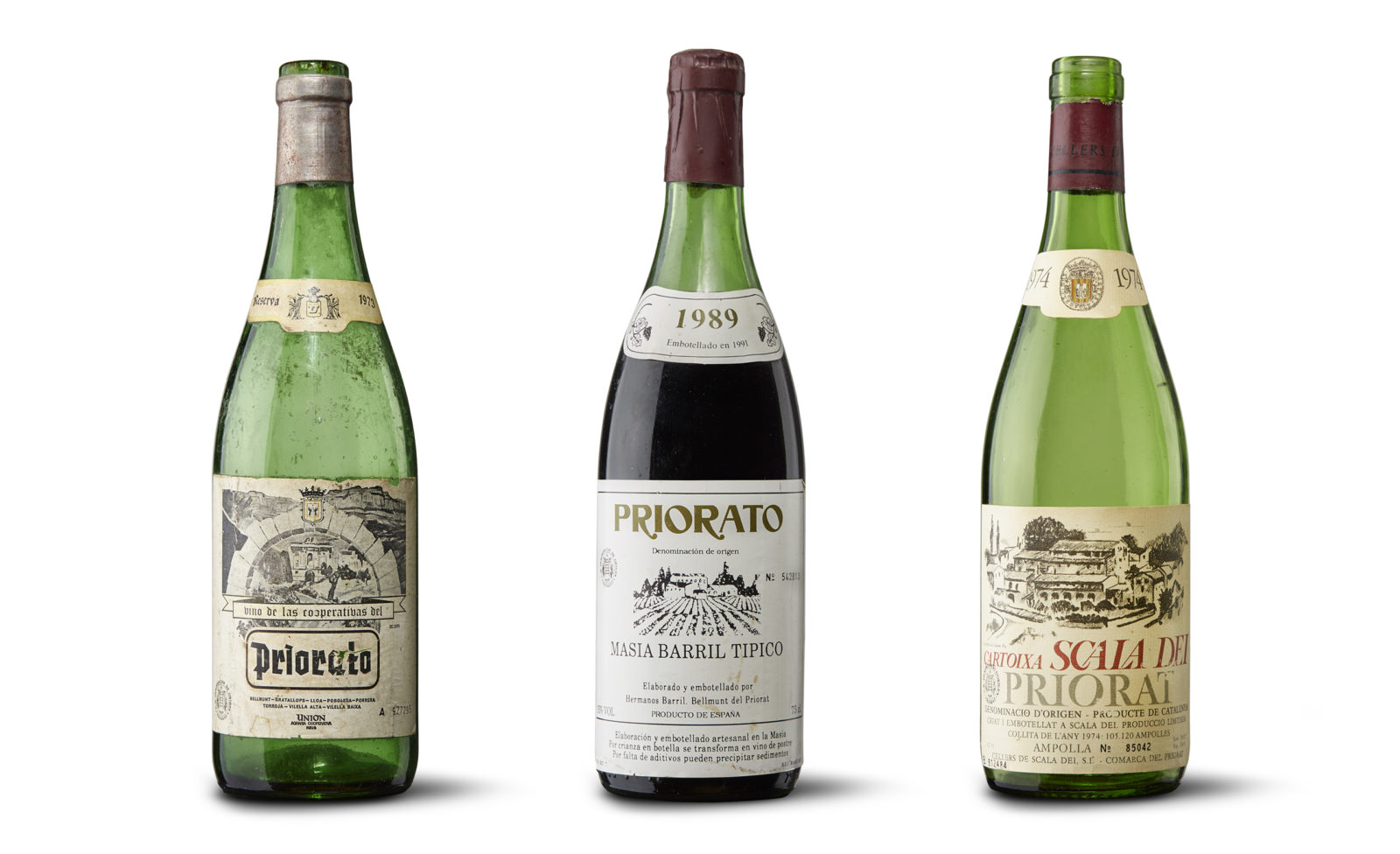
Finally, when I’m travelling and selling my wines I experienced all these simple, gastronomic, slow-food restaurants that loved my wines but even the Torroja and Terra de Cuques are just too expensive. Also for restaurants that are interested in pouring one of my wines, Terroir Históric is perfect for these modest gastronomic restaurants, while getting a bit of attention for Terroir al Limit.
So the idea and reality behind Terroir Históric is to revive the ideas behind these historic labels, to show the culture of wine that existed in the Priorat before the arrival of the famous Clos, to give pride to the history of the Priorat, to show that there was something here that didn’t originate from outside, and to get these wines into the hands of innovative and interesting restaurants. There is also the goal of renovating our village cooperative. There are only about 100 people in the village and most of them are over 60. So my idea is to restore the historic Cooperativa and to get the young people behind the project.
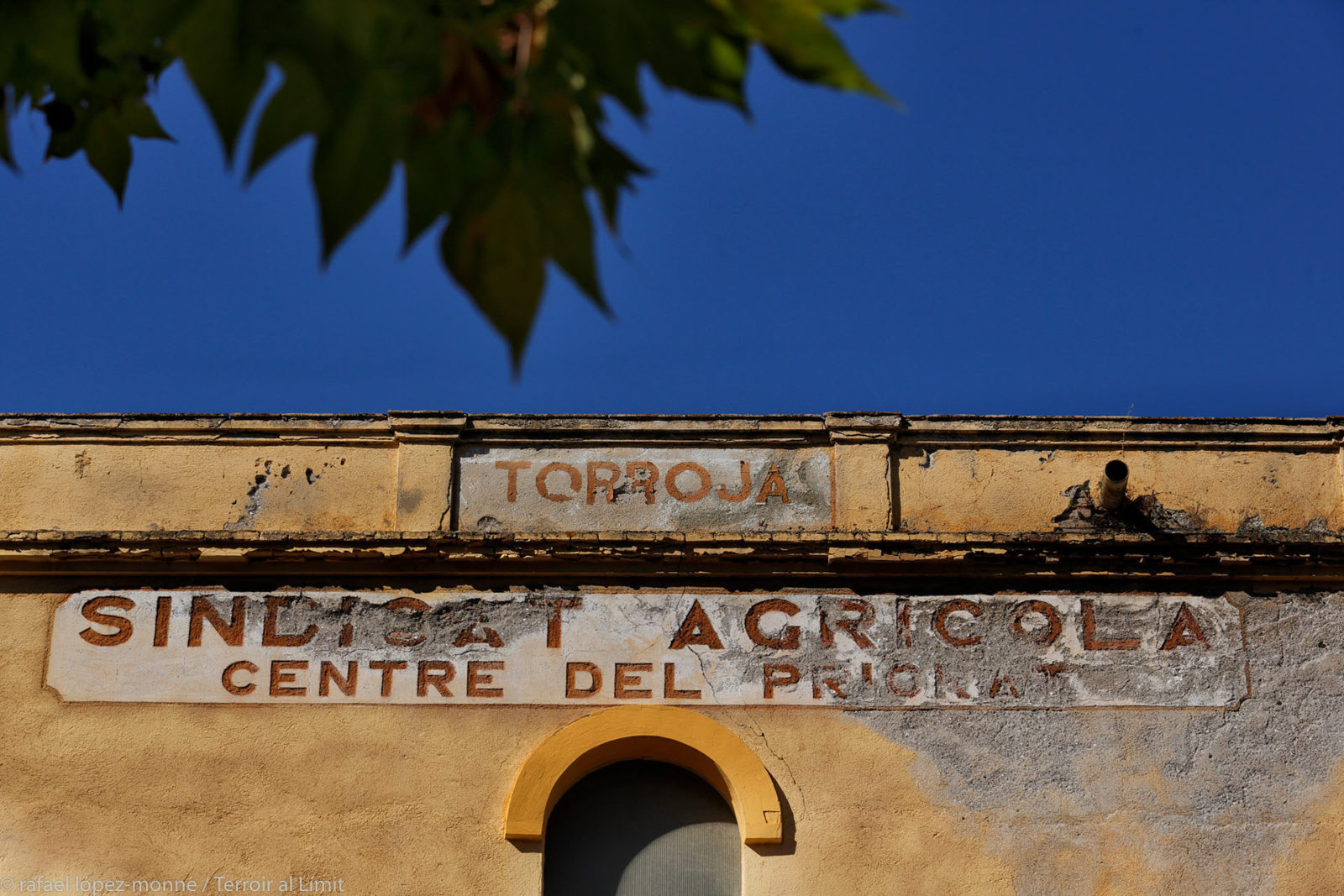
Cooperativa de Torroja
When did the Cooperativa in Torroja close?
About 15 years ago. They were using it as a warehouse but now the roof is really bad and something has to happen or the building will be lost. Another goal is to convert many more vineyards in the Priorat to organic farming. Which is very important for me because if you have these beautiful vineyards that are organic and biodynamic and then you have a neighbor with a different concept of farming – it’s a problem. I also need a destination for my young vines that I’m planting. I cannot put them in Vi de Vila Torroja or Terra de Cuques.
What are the main differences between Terroir Históric and Terroir al Limit?
Terroir al Limit is a Burgundian idea of the single vineyard wines. Its goal is to identify a place with an old vineyard, and then to do everything to show that place in each bottle as authentically as possible. This is Terroir al Limit – the whole lineup of the seven wines. Terroir Históric is the exact opposite. We want to get an idea of the whole region so we are sourcing grapes from all around the Priorat and making a “generic” Priorat, both white and red.
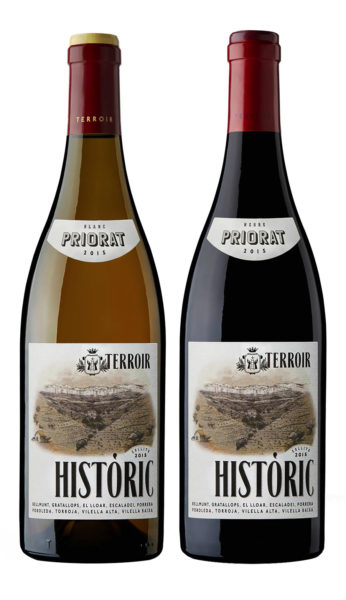 Your first vintage was 2015?
Your first vintage was 2015?
Yes.
And it was a small production?
We did about 5000 bottles of each, Blanc and Negra, and it was immediately sold out. So now I have to look carefully for more organic vineyards, partners and families to grow the production. These are meant to be young wines, not wines that are aged for a long time before release.
What are the differences between the winemaking at Terroir Historic and Terroir al Limit?
First of all the idea, even for Terroir al Limit, is not about aging for a long time because in the Mediterranean you can have a really nice wine in two to four years. With Terroir Históric the goal is to have really good grapes, and then a very simple process when it comes to vinification and elevage. So we use only large, 5000L concrete tanks, so its quite easy to fill the tanks and do the vinification and we press it off and it stays there for another 6 months, a very short time in concrete and then it goes straight to bottle. So for Terroir Históric it is all about good organic grapes, very simple vinification, aging and getting it into bottle before summer to keep costs as low as possible.
From which villages are you currently sourcing grapes?
We have grapes from every village on the label, sometimes only 1000 kilos, and from other villages we have more. We are rather strong in Torroja and La Morera, because we bought some land up there, which is why we have more Garnatxa than Carinyena at the moment, and I see this continuing in the future. Históric will be more Garnatxa-driven. It’s lighter, it’s easier, it’s nicer with the fruit approach and there is just more Garnatxa around in the Priorat.
What is the status of Carinyena in the Priorat? I’ve heard that some people have started to replant it but conventional wisdom holds that it takes time to make interesting wine from it.
There are a lot of people grafting to older vines. Alvaro Palacios grafted 60,000 vines from Cabernet Sauvignon to Carinyena for example, so then you already have the existing root system in the vineyard and you’re much faster in getting quality grapes. To be honest, it’s very true that everyone says that you cannot make interesting wines from young Carinyena, but when you treat the vineyard really well you can make decent wine from young vines. It’s definetly the better choice in Priorat in most situations, when it comes to schist and a rather hot climate, you have the thick skin and the ability to produce a lot of acidity so Carinyena, in my opinion, is more suitable for the Priorat than Garnatxa. For Garnatxa you need very special areas high up in the mountains and on clay rather than slate.
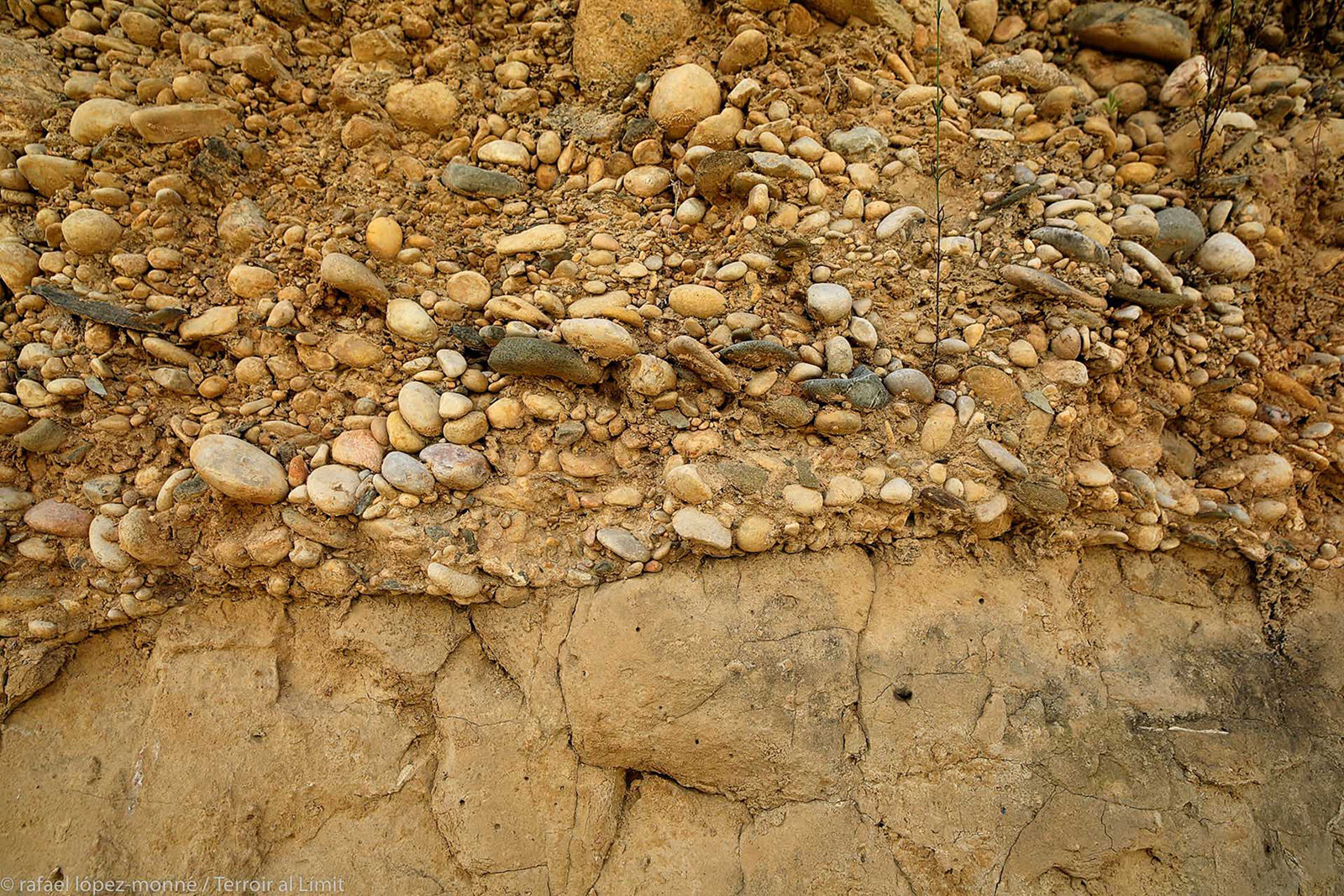
Gravelly clay in El Lloar, Priorat.
White varieties in the Priorat represent what percentage of total plantings?
Only 5% of total production in the Priorat is white unfortunately. But I see the whites as a very interesting alternative to the reds for gastronomy. It’s just better for Mediterranean gastronomy and you have many more possibilities with more cuisines with a white wine than a red.
Given its scarcity, are you souring most of the available white grapes at this point for Históric?
I’m buying quite a bit of what is available in the region.
People always think of Garnatxa and Carineyena as the main grapes of the Priorat, what do you feel are the best white varieties?
I see Grenache Blanc, Macabeo, Pedro Ximénez, I could imagine Grenache Gris but unfortunately there is almost no Grenache Gris, I could imagine Carinyena Blanc. Xarel.lo works very nicely and I have a very small production of Xarel.lo and we are working with Muscat which has a beautiful expression of Mediterranean aromas, its very nice with cheese. We have many more possibilities with white wines overall.
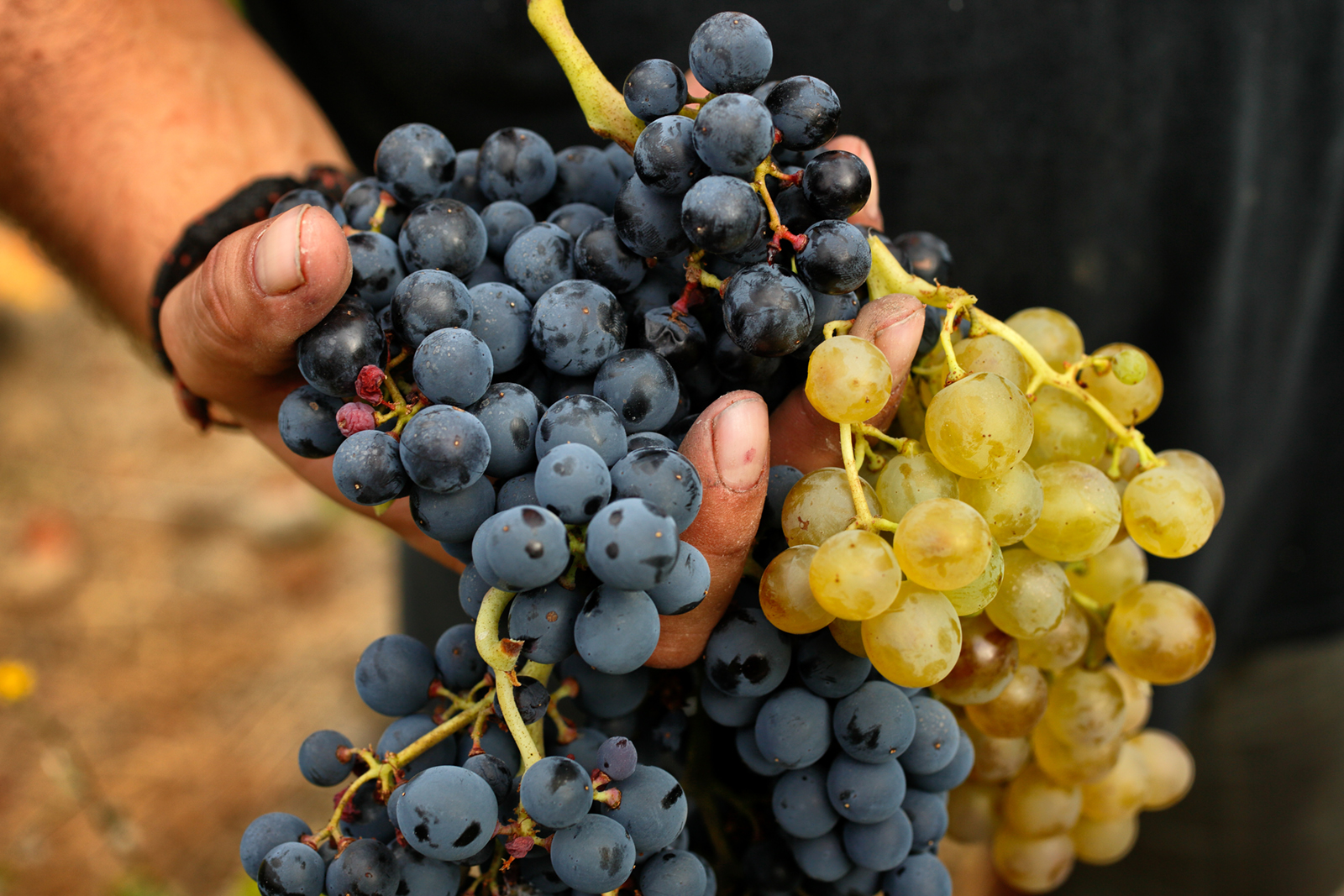
What do you think is the typical expression of white wines in the Priorat?
My first step is to try to get away from the very ripe, full-bodied style, which is really a question of viticulture and choosing the moment to harvest. And now we’re experimenting on getting some slightly biologic elements into the wines to remind people that we are in the Mediterranean. The greatest wine region in Spain, in my opinion, is Jerez so I think it’s nice to also reference a slightly biologic flavor which adds complexity to the wines and it makes the wines incredibly age-able as well as making them a very good food pairing partner.
When did you first have flor develop in your PX at Terroir al Limit?
It happened by accident about 5 or 6 years ago but I fell in love the aromas. It’s all about not overdoing it. There will also be a 100% oxidative elevage of Pedro Ximénez in the future but for the moment we’re just using small bits and pieces in the Pedra de Guix.
About what percentage of the PX in Guix comes from “biologic” barrels?
About 1/3 of the Pedro Ximenez. There is a really interesting reason why we have Pedro Ximénez in the region. It’s because of the lead mines in Molar and Lloar and the miners who worked them came from the south of Spain, from Jerez, so they brought Pedro Ximénez with them so I think it’s a nice idea to make an homage to those very people who brought this grape to the region.
How do you plan to sustainably grow Terroir Historic?
I don’t see myself buying wine because I want to control everything from the very first, to the last moment of production. I see myself buying grapes, having a very direct relationship with the families, the farmers of the vineyards. Only working with organic grapes, which isn’t easy to convince people especially if they are older, and having them change how they think of viticulture. But I can also imagine that we would buy some land and plant, especially for grape varieties you do not find so often in the Priorat like Pedro Ximénez.
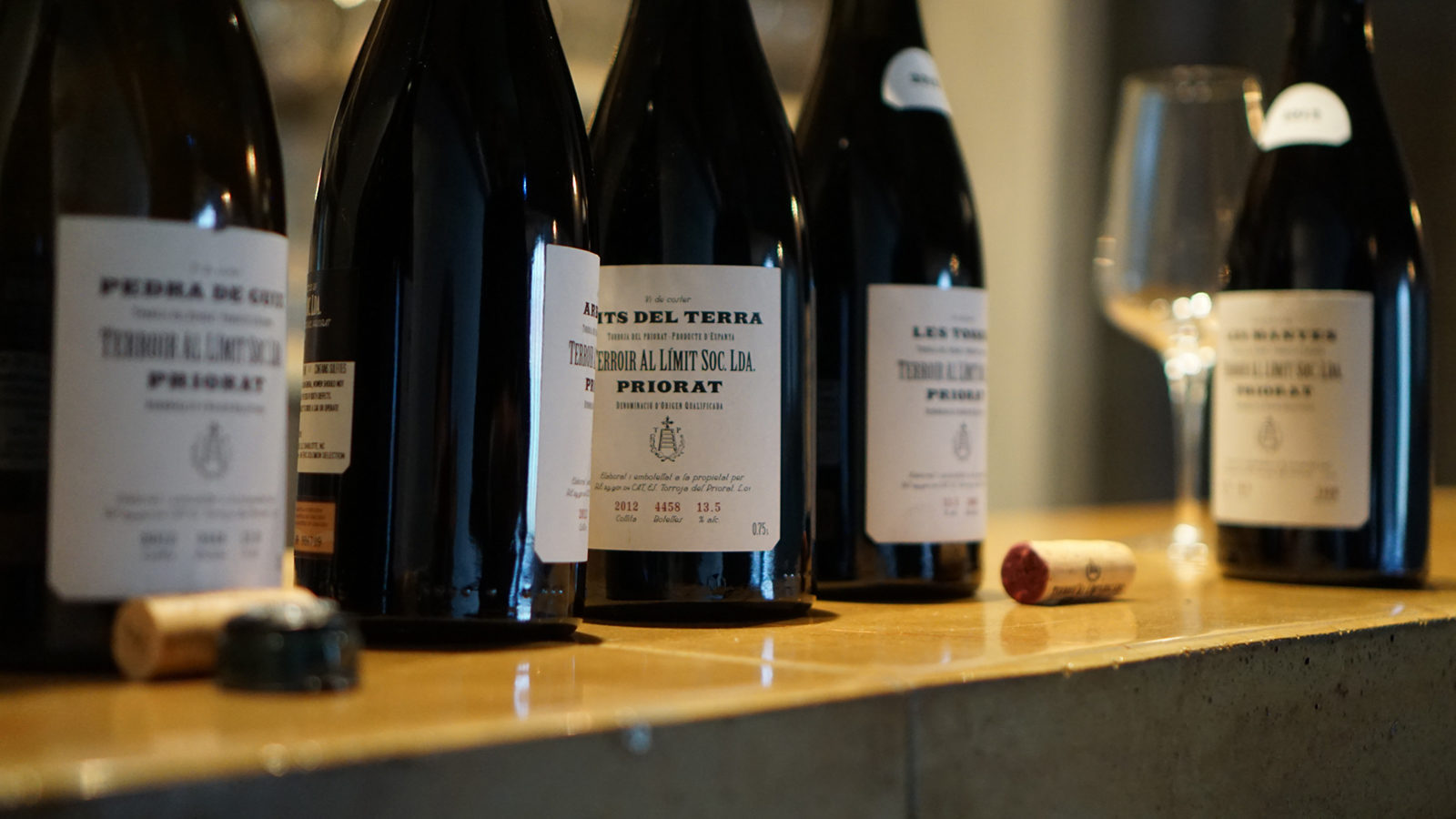
What about Terroir al Limit, what’s new?
At Terroir al Limit we are producing about 40–45,000 bottles at the moment but I’d like to grow that to 60,000 bottles. So the idea is to have 20,000 Torroja, 20,000 Cuques, 5000 Arbossar, 5000 Dits and Pedra de Guix and about 2500 Manyes and Tosses. This would be the absolute maximum number of bottles for Terroir al Limit.
As Históric grows will you have to find a new home for Terroir al Limit?
The idea is to house Terroir Históric entirely in the Cooperativa and leave Terroir al Limit where it is for the moment. As we grow Históric, we are also planning to construct our own cellar for Terroir al Limit. It’s a very complicated situation where we are now: there are two different cellars, lots of different floor levels. It is not a safe working environment; it’s very tiring for everyone, so we are looking for a new place now. I’d like to have a very simple and efficient cellar to fine tune the quality level of Terroir al Limit.
It is also your responsibility to sell the wines you make so you travel quite a bit, what have you learned from these travels?
I always try to find a healthy equilibrium between classic wine-drinking countries and places where wine is not made locally. I’m especially excited about Spain, which is recovering economically, with Barcelona becoming the capital for Mediterranean wine at the moment, so there’s quite a bit of energy there. Then we have interesting markets in London, the UK, Paris, and some cities in Italy – the classical European centers for wines, which have always been important to me. Then obviously America is a huge market. Finally there are tiny markets that are increasingly important for me because they represent a future trend when it comes to gastronomy and wine – like Scandinavia. There’s the movement known as Nordic Cuisine and Noma in Copenhagen is probably the best known but it is also happening in Norway and Sweden – these are very interesting, dynamic markets.
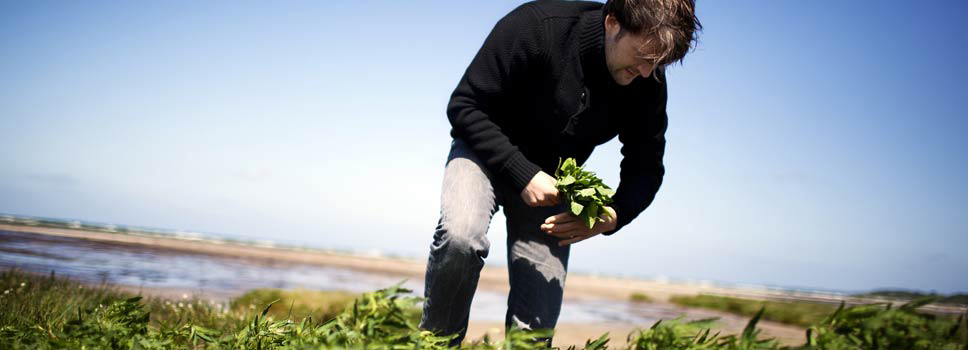
René Redzepi of Noma
Do you see the New Nordic Cuisine movement as growing and evolving, or has it reached its maturity?
I really don’t call it Nordic Cuisine, its just giving much more respect to the ingredients themselves, to their freshness, seasonality – the idea to get the best possible ingredients and treat them with the utmost respect in a rather simple way. I respect that approach. In fact this is a rather classic approach if you look at traditional cuisine in Italy, Spain or even Japan. Further afield there’s Australia and Peru where there is a growing culinary awareness, energy and creativity.
Any new markets on the horizon?
To be perfectly honest, there’s not a single bottle of Terroir al Limit in Peru (laughter), and we’ve not sold anything to Finland, to Iceland (laughter). Seriously though, I see myself investing a lot of my energy in Spain for the next few years. There are a lot of great and beautiful restaurants all around the peninsula so working on that is really important for me at the moment.
When you go to a country with a very strong culinary tradition like Spain, France or Italy, they can have a tendency to resist evolution for the sake of classicism. In places like Scandinavia where indigenous culinary traditions were not as strong, there’s been tremendous innovation. Do you see a change in the kitchens of Spain, France and Italy towards this more innovative style?
I think the best example is France. It’s in a bit of a dilemma right now, it’s a bit tired – the whole high-end, bourgeois, gastronomic regime. Which is why there is a growing movement back towards the Bistro style – a rather simple approach focusing on the raw materials. So while classic cuisine is suffering a crisis, there is always a way out by going back to the basics, the raw ingredients.
Another element of Nordic cuisine that I find fascinating is that they are elevating what would be seen as working class and rural culinary traditions – foraging, pickling and preserving – adding sour, salty and earthy elements. It’s new. It’s not home cooking, but really and truly avant-garde cuisine. It’s both “hyggelig” and revolutionary.
I think there is a general revolution in values happening in society. Twenty or thirty years ago if you had a brand new Porche, then you’d be the “guy” in town but now that seems vulgar and primitive. Now you even see men interested in cooking, wine, parenting and culture in a way that has never been so prevalent and there is a cultural status to be gained in being interested in these less materialistic things. When I visit two and three star restaurants now, there’s been a significant change in the variety of elements on the menus. In the old days there was always the shellfish, the caviar and the foie gras and all these typical luxury products. But now you find very simple and humble ingredients prepared with a high precision, which is reflective of these changes in values in society.
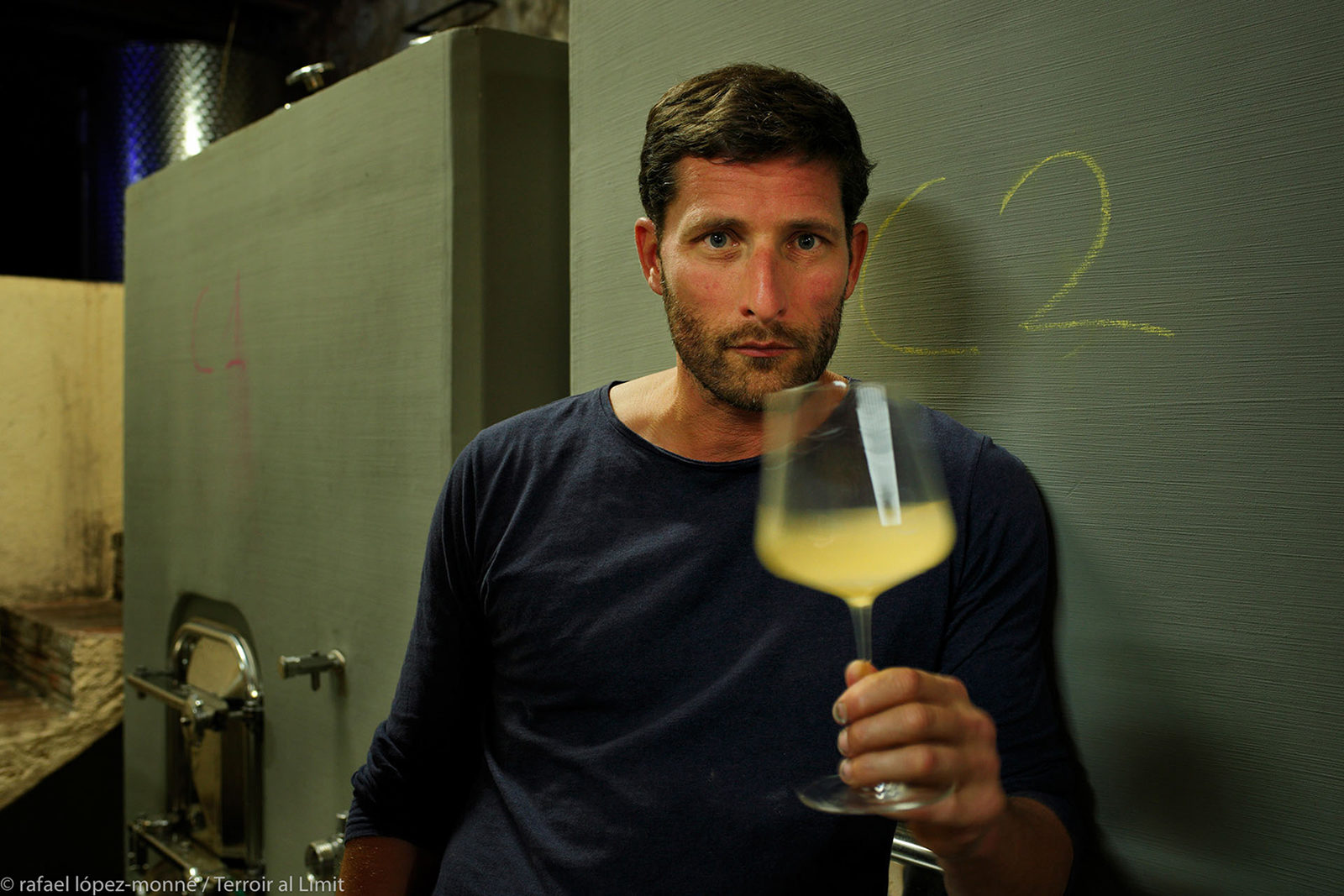
This really brings our conversation back full circle to Terroir Historic.
Exactly, inexpensive wine doesn’t have to mean bad wine. You can make beautifully expressive, terroir-based wines at an affordable price and bring them to restaurants that have a similar philosophy. In the process you can introduce a new group of people to the culture of wine made with a natural approach, organically farmed grapes that are treated with respect in the cellar. For me Terroir Históric captures the scent and spirit of the Mediterranean and I really feel that the culture of food and wine is returning to the Mediterranean. European cuisine started in the Mediterranean, and then spread around Europe. It was elaborated in Northern France and Italy along with wines from Piedmont, Bordeaux, Burgundy and the Northern Rhone, then revolutionized in places like Scandinavia and now all those innovations are returning to the Mediterranean. It’s happening in Sicily, in the Roussillon, in Spain, in Portugal. It’s the Mediterranean idea, not the idea of a Château. It’s about the product – whether its food or wine. It’s a change in philosophy and a return to Mediterranean values.
Speaking of Mediterranean values, 2015 was a return to a more typical growing season in the Priorat after several cooler and wetter vintages. What can you say about your 2015s?
You cannot deny that 2015 was dry, but that is not a problem for me at all, and it is perhaps my greatest vintage. Right now I have a very good team and our vineyards are at a very good quality level producing beautiful grapes. We also have more resources in the cellar to make beautiful wines. A few years ago I was very concerned about global warming and I thought the Mediterranean was going to be disadvantaged. Now I think everyone will lose a bit in the end, but I see these changes impacting the north more than the south. If you work your vineyards well, have good compost, and practice biodynamic principals, you can still get beautiful grapes in the south. Also if you use traditional varieties, they are adapted to hot and dry weather.
What characteristics do you find typical of the Históric wines?
The French have a very beautiful expression, the call it vin de soif. I do not like the word simple, simple for me is not very positive. You drink Históric not with your mind but with your belly and emotions. With Terroir Históric you are hungry and thirsty and want to socialize because in the end this is the fundamental thing about wine, you share it with your friends and family and you want to drink uncomplicated wines with your emotions and not so much with your intellect.